From tire-smoking legends to chrome-drenched icons, American muscle cars defined raw power and rebellion. Here’s the definitive look at the 15 greatest classic muscle cars that shaped history, performance, and passion across generations.
Key Takeaway
– These 15 classics represent the golden era of American performance, blending raw horsepower, iconic design, and lasting cultural influence.
– Each car has a distinct story: technological innovation, racing pedigree, rarity, or pop-culture fame.
– Collectors prize original numbers-matching, rare options (Hemi, LS6, Stage 1), and well-documented restorations — values for top examples often exceed six figures.
– The lineage of these classics directly informs modern muscle cars (Hellcat, Camaro ZL1, Mustang GT500) and the continuing fascination with V8 performance.
Contents
Why These Cars Matter?
The muscle car craze was not a single moment but a conflagration: low-cost, mid-size platforms meeting high-displacement V8s, a youth market with cash and appetite, and manufacturers eager to claim street and strip dominance. From the mid-1960s to the early 1970s, Detroit’s creative and competitive energy produced vehicles that were equal parts engineering, theater, and social signal.
Each of the fifteen cars below represents a facet of that era — technical daring, affordability, race-bred aerodynamics, or badge-driven luxury. Below, each entry offers history, specs, cultural notes, and collector insight so enthusiasts and buyers can understand why these cars remain central to American automotive identity.
1. Pontiac GTO – The Original Muscle Car
Widely regarded as the first true muscle car—though some debate credits the 1949 Oldsmobile Rocket 88—the 1964 Pontiac GTO revolutionized the industry. Engineered by John Z. DeLorean, it shoehorned a 389 cubic-inch V8 into the Tempest chassis, producing 348 horsepower and 428 lb-ft of torque. This defied GM’s internal ban on engines over 330 cubic inches in mid-size cars, sparking the horsepower wars. Sales exploded to over 32,000 units in year one, proving demand for affordable performance.
By 1970, the GTO Judge variant amped it up with Ram Air IV, delivering 370 horsepower and a 0-60 mph in 6.5 seconds. Its bold Carousel Red paint, hood tach, and decals embodied youthful rebellion. In comparisons, it outpaced contemporaries like the Ford Mustang in straight-line speed but offered better handling thanks to its balanced weight distribution.
In 2025, well-restored GTOs fetch $80,000–$150,000 at auctions, up from pre-2020 averages due to rarity. Common issues include rust in floor pans and quarter panels; inspect thoroughly. Restoration tips: Source original Tri-Power carbs from Hemmings forums for authenticity. For buyers, this is one of the best classic muscle cars under $100k for entry-level collectors
2. Dodge Charger — Fastback Drama Meets Hemi Bite
The Charger’s long hood and fastback profile made it a movie-ready star before it ever hit the strip. But style alone doesn’t explain the Charger’s place on this list: the optional 426 Hemi (425 hp rated) made the Charger a serious quarter-mile weapon. The 1969 Charger Daytona’s aero nose and towering wing were functional — enabling sustained high speeds on NASCAR ovals — and the Daytona/Charger line remains among the most coveted, often eclipsing $200k for well-documented Hemi cars.
Beyond pure performance, the Dodge Charger became a cultural shorthand for menace and muscle after prominent appearances in movies and television. That pop-culture afterlife keeps enthusiasts yearning for the rumble of a Hemi V8 and the Charger’s headline-making design.
Advice: when buying a Charger, verify VIN decoding for engine/transmission combos and inspect for common rust areas: quarter panels, rocker rails, and roof-to-pillar seams.

3. Chevrolet Chevelle SS — Big-Block Brawn
If you want brute force, the Chevelle SS was the era’s brute. Rated at 450 gross hp in 1970, the Chevelle combined big-block grunt with chassis balance that made it terrifyingly fast in a straight line. The cavernous torque and aggressive cam profiles yielded quarter-mile times that humbled exotic cars.
The Chevelle’s visual swagger — wide stance, bulging hood, and functional Ram Air inlets — made it an icon among young performance buyers. Today, cars in top condition trade hands for mid-five-figure to six-figure sums. Up-to-date auction results, careful documentation, and factory option verification are essential for buyers.
Advice: confirm block casting numbers and transmission codes; original LS6 paperwork and dealer invoices significantly enhance value.

4. Dodge Daytona & Plymouth Superbird — The Winged Nimrods
The Dodge Daytona and Plymouth Superbird represent one of the most dramatic moments where engineering met marketing. NASCAR rules required cars to be “production made,” and so manufacturers built limited-run homologation specials. The Daytona’s pointed nose and the Superbird’s towering wing were more than theater: they shaved seconds off lap times and brought OEM aero science to the masses.
On the collector market, genuine Hemi-correct Daytonas and Superbirds command massive prices — often into the mid-six- and seven-figure range for concours-level cars with documented racing history.
Advice: authentic Daytona/Superbird identification requires checking VIN ranges, engine pad codes, and original option tags. Race-prepped examples with documented track history are the rarest and most valuable.
5. Buick GSX — The Refined Torquebomber
Buick’s GSX was the “gentleman’s muscle car”: plush interiors and upscale touches paired with a monstrous 455 V8, especially in Stage 1 trim. The torque numbers — 510 lb-ft in Stage 1 — gave the GSX unmatched launch punch for a large personal-luxury style car. Buick’s take on muscle was to combine isolation and speed: the GSX could be driven comfortably and then let loose on the strip.
On the market, Stage 1 examples and cars with documented, correct engines are sought-after, often fetching strong prices among collectors who value both uniqueness and performance.
Advice: verify that the car has original suspension and rear-end gear ratios. Many GSXs were modified; factory-correct examples are worth a premium.

6. Oldsmobile 442 — Balanced Power And Handling
Oldsmobile’s 442 name originally meant 4-barrel carb, 4-speed manual, dual exhaust — an ethos of athletic balance rather than sheer displacement. The 1970 W-30 variant breathed performance with aggressive cam timing and induction, yielding a blend of track-capable speed and everyday driveability.
Collectors prize W-30 cars for their rarity and factory-tuned performance; nicely restored examples typically command solid values. The 442’s role in the muscle ecosystem was that of the “cultured bruiser” — sophisticated enough to cruise comfortably, but with genuine performance credentials.
Advice: ensure the W-30 block and cam are present; correct intake and carburation setups are key to authenticity.
7. Plymouth Road Runner — Proven Performance For The Masses
Affordable performance was Plymouth’s mission with the Road Runner: a straightforward, no-frills car aimed squarely at buyers who wanted speed without luxury. The Road Runner’s base 383 was potent, but the optional 426 Hemi transformed the car into a lethal straight-line performer. The advertising tagline “Beep-beep” and the cartoonish Road Runner badge belied a serious performance car.
The Superbird — with its elongated nose and enormous wing — was Plymouth’s answer to Ford’s aero cars on the NASCAR circuit. Built to win on the oval and to sell on the street, Superbirds and their Hemi cousins are today among the rarest and highest-valued Mopar collectibles.
Advice: confirm original aerodynamics components and factory ordering records; many replica Superbirds exist, so provenance is everything.

8. Ford Torino Cobra — The Blue Oval’s Hidden Hammer
Ford’s Torino Cobra may be overshadowed by the Mustang in public imagination, but under the hood the Torino packed serious performance with the 429 Cobra Jet. Engineered as a handler as well as a launcher, the Torino Cobra was a statement of Detroit’s breadth of performance engineering beyond pony cars. Its relatively low production numbers and understated looks now make it an intriguing choice for collectors who want performance without the Mustang price tag.
Advice: look for correct magnum four-barrel setups and original suspension/options. Torino Cobras with matching numbers and minimal rust are climbing in desirability.

9. Chevrolet Nova SS — Little Rocket, Big Heart
The Nova SS demonstrated that big power could be fitted into compact packages for blistering performance. With 396 and L78 options, the lightweight Nova posted excellent power-to-weight ratios and became a favorite of drag racers and street enthusiasts. Beyond acceleration, Novas were relatively affordable and durable, which kept a large number on the roads and in garages into the modern era.
Advice: rare high-performance L78 Novas are desirable; watch for swapped drivetrains in supposedly “original” cars — proper documentation matters.

10. AMC Rebel Machine — The Underdog That Roared
American Motors may not be the first brand associated with muscle, but the Rebel Machine proved AMC could build something attention-grabbing. The patriotic paint scheme and strong 390 V8 made the Rebel Machine an immediate head-turner. Production was limited, and AMC’s outsider status in the market makes these cars rare and collectible today — a distinctive alternative to the “Big Three” offerings.
Advice: authenticity verification for slew options and factory paint is crucial. Machines with original interior and matching drivetrain command higher bids.
11. Plymouth GTX — The Gentleman’s Muscle
Positioned as a luxurious, high-performance option, the Plymouth GTX combined touring comfort and Mopar power. Optioned with the 440 Magnum and (rarely) the 426 Hemi, the GTX catered to buyers who wanted a comfortable cruiser capable of sudden, startling acceleration. Its shorter production life has made well-preserved examples scarce and valuable to collectors who appreciate a mix of comfort and muscle.
Advice: inspect the interior trim and options list — GTX buyers often took upscale options that add to originality value.
12. Mercury Cyclone Cobra Jet — NASCAR-Bred Rarity
The Mercury Cyclone Cobra Jet was Ford’s endeavor to win on the oval and sell on the street, with the 428 Cobra Jet providing strong, underrated power. With fewer than 3,500 built, these cars are relatively rare and come with NASCAR cred that many collectors find irresistible. Their understated Mercury styling and brute performance reflect a period when blue-collar racing success translated directly to showroom glamour.
Advice: correct engine pad casting, carburetor, and intake manifold details distinguish genuine units from later conversions.
13. AMC AMX — The Two-Seater Rebel
The AMX is the muscle car for those who prize uniqueness. As a two-seater built to compete with smaller European sports cars and the Corvette, the AMX married a compact footprint with big V8 power. Its short wheelbase and light curb weight gave it an engaging agility that many other muscle cars didn’t have. Production numbers were low, and today AMXs are sought for their quirky blend of sports-car handling and raw American V8.
Advice: look for original drivetrain documentation and factory option codes; genuine AMX pieces are growing in value.
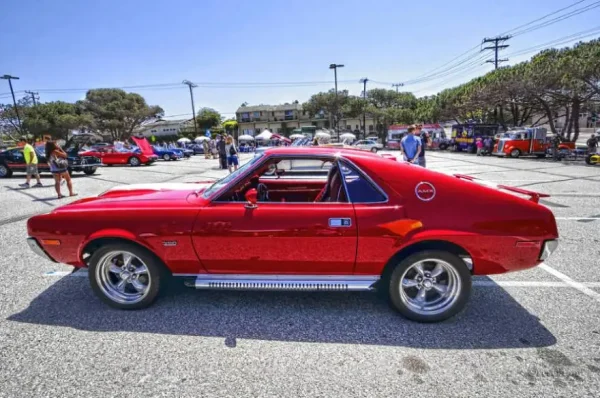
14. Pontiac Trans Am 455 — The Swan Song Of An Era
By 1972, emissions filters and insurance costs were shrinking horsepower, yet Pontiac’s Trans Am 455 stood as one of the last true high-displacement muscle cars. With bold graphics, the “screaming chicken” hood, and a 455 cubic-inch engine, the Trans Am represented both the apex and the beginning of the end of the classic muscle era. For collectors, these cars capture the twilight of high-displacement engineering before new regulations reshaped an industry.
Advice: original 455 engines with correct compression and cam specs are rare and valuable. Keep an eye on authenticity of cosmetic elements — decals and hoods are often swapped or restored.
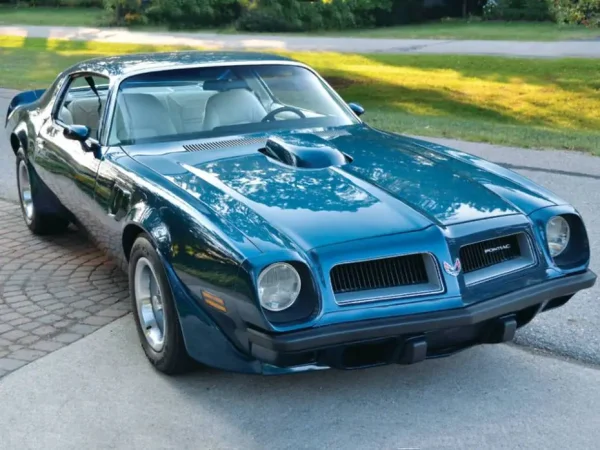
15. Dodge Challenger R/T 440 — Mopar’s Final Statement
The Challenger R/T 440 encapsulated Mopar’s approach: bold looks, multiple high-performance engine options, and street-legal aggression. The 440 Six Pack delivered a thunderous midrange and a memorable soundtrack, and limited-production variants now sell for strong prices. The Challenger’s retro-styling made it a poster child for enthusiasts and a frequent sight in film, further elevating its cultural standing.
Advice: find documentation for 440 Six Pack cars and verify carburetor and intake configurations. Original shaker hoods and fender tags are crucial for authenticity.

Why The Era Ended — And Why It Still Matters
The muscle car era faded due to converging external factors: the 1973 oil crisis made thirsty V8s impractical; emissions regulations and catalytic converters forced detuning; and insurance companies hiked rates for high-performance cars. However, the cultural and engineering DNA endured. Restomod culture, auctions, and aftermarket performance companies revived many classics with modern suspensions, improved brakes, and stroked engines — allowing classic silhouettes to deliver modern performance.
The story of muscle cars is a story of adaptation: the raw concept of accessible speed persists, even while the technologies evolve. Today’s Hellcats and ZL1s are heirs to an ethos born in the 1960s.
Collector’s Guide: Buying, Restoring, Investing
If you’re buying a classic muscle car, prioritize:
Rust inspection — floor pans, rocker panels, trunk rails, and frame rails are common failure points. Use magnets to detect filler sections.
Matching numbers — original engine, transmission, and VIN matching increase value. Documentation (build sheets, dealer invoices) matters.
Restoration quality — factory-correct restorations with period-correct paint codes and hardware command higher prices than modified or “hot-rodded” builds.
Market trends — track auction results from Hagerty, Barrett-Jackson, and Mecum for real-time valuations.
Ownership costs — classic cars need climate-controlled storage, premium fuels, and parts sourcing; budget accordingly.
Insurance & registration — specialty insurance can be cost-effective but requires accurate appraisals.
Restoration And Restomod Decisions
Restorers face a choice: factory-correct restoration vs. restomod (upgraded brakes, modern fuel injection, independent rear suspension). Both have audiences: purists pay top value for authenticity; restomodders prioritize driveability and safety. Consider your goals: investment appreciation vs. daily enjoyment.
Closing — Join The Conversation
These 15 cars are more than metal and power — they’re chapters in a living story about design, innovation, and identity. Which of these classics is your dream ride? Share your pick in the comments, and pass this article along to other enthusiasts so the rumble of these legends never dies.
Conclusion
These classic muscle cars were more than just powerful machines—they were cultural icons, representing an era of unfiltered automotive passion. Whether you’re a collector, enthusiast, or admirer, their legacy in automotive history is undeniable.
FAQs: Classic Muscle Cars In American History
1. What defines a classic American muscle car?
A: classic American muscle car is a high-performance, rear-wheel-drive vehicle built primarily in the 1960s and 1970s, featuring a powerful V8 engine. These cars emphasized straight-line speed, aggressive styling, and affordability—making them icons of American automotive culture.
2. What is considered the first true muscle car?
A: Most experts consider the 1964 Pontiac GTO the first true muscle car. It combined a midsize body with a large 389-cubic-inch V8, setting the formula for all muscle cars that followed and igniting Detroit’s horsepower wars.
3. Which classic muscle car is the most powerful ever built?
A: Among vintage models, the 1970 Chevrolet Chevelle SS 454 LS6 tops the list, rated at 450 horsepower—though many believe the true figure was higher. Modern muscle cars have surpassed it, but for its time, it was a beast on the streets.
4. What’s the rarest classic muscle car today?
A: The 1971 Plymouth Hemi ‘Cuda Convertible is one of the rarest. With only a handful ever built, it commands multi-million-dollar prices at auctions and stands as a holy grail among collectors.
5. Why are 1960s and 1970s muscle cars so valuable?
A: These cars embody an era of unrestricted performance and bold design. Their limited production numbers, historical importance, and nostalgia factor drive collector demand—especially for original, numbers-matching models.
6. Are classic muscle cars good investments?
A: Yes. Restored and well-documented muscle cars often appreciate over time, particularly models like the Dodge Charger R/T or Shelby Mustang GT500. However, investment value depends on condition, originality, and provenance.
7. Which classic muscle car has the best design?
A: The 1969 Dodge Charger is often praised for its long, sleek fastback design and aggressive stance. Its iconic look was immortalized in pop culture through shows like The Dukes of Hazzard and movies like Bullitt.
8. How much horsepower did 1970s muscle cars produce?
A: Most muscle cars from the 1970s produced between 300 and 450 horsepower. However, due to changes in fuel and emission regulations, power levels began to decline after 1972, marking the end of the golden era.
9. What’s the difference between a muscle car and a sports car?
A: Muscle cars focus on straight-line acceleration using big-displacement V8 engines and heavier frames, while sports cars emphasize handling, agility, and balance. The Chevrolet Camaro Z/28 and Mustang Boss 302 blurred that line by offering both power and control.
10. Which muscle car has appeared in the most movies?
A: The 1967 Ford Mustang Fastback, particularly the Eleanor version from Gone in 60 Seconds and Bullitt, is one of Hollywood’s favorite muscle cars, symbolizing American speed and rebellion.
11. How much does it cost to restore a classic muscle car?
A: Restoration costs vary widely—from $20,000 for light refreshes to over $100,000 for full frame-off restorations. The rarity of parts and authenticity requirements heavily influence final costs.
12. What’s the most affordable classic muscle car today?
A: Models like the Chevrolet Nova SS, Plymouth Duster 340, and AMC Javelin offer classic V8 performance at a fraction of the cost of rarer icons like the Hemi ‘Cuda or Shelby GT500.
13. How do I verify a muscle car’s authenticity before buying?
A: Always check the VIN, engine codes, and build sheets. Original factory documentation and expert appraisals can confirm whether a car retains its factory engine and components—crucial for collector value.
14. Are modern muscle cars still true to their roots?
A: Yes. Cars like the Dodge Challenger Hellcat, Ford Mustang GT, and Chevrolet Camaro SS carry the spirit of their ancestors—offering massive horsepower, bold styling, and a focus on pure driving excitement.
15. What is the most collectible muscle car of all time?
A: The 1970 Plymouth Hemi ‘Cuda is widely regarded as the most collectible due to its rarity, design, and unmatched Hemi power. Well-preserved examples can fetch several million dollars at auction.
16. Which muscle car has the best resale value today?
A: The 1969 Camaro Z/28 and 1967 Shelby GT500 have strong resale value because of their enduring popularity, racing pedigree, and limited production runs.
17. Can classic muscle cars run on modern fuel?
A: Most can with minor modifications, such as hardened valve seats or fuel additives to compensate for the lack of lead in modern gasoline. Many enthusiasts upgrade to electronic ignition for reliability.
18. Which muscle car had the biggest engine ever offered?
A: The 1970 Chrysler 426 Hemi and Chevrolet 454 LS6 engines were among the largest factory V8s, known for delivering brutal torque and legendary street dominance.
19. Are muscle cars difficult to maintain?
A: Maintenance can be more demanding due to age and part availability, but their mechanical simplicity makes them easier to repair than modern vehicles. Routine upkeep and proper storage extend their lifespan.
20. Why do muscle cars remain so beloved today?
A: Muscle cars symbolize freedom, individuality, and American ingenuity. Their roar, design, and history continue to captivate generations of enthusiasts who see them as rolling pieces of art and performance heritage.
Sources: Hemmings Motor News, Hagerty Valuation Tools, MotorTrend, ClassicCars.com Journal
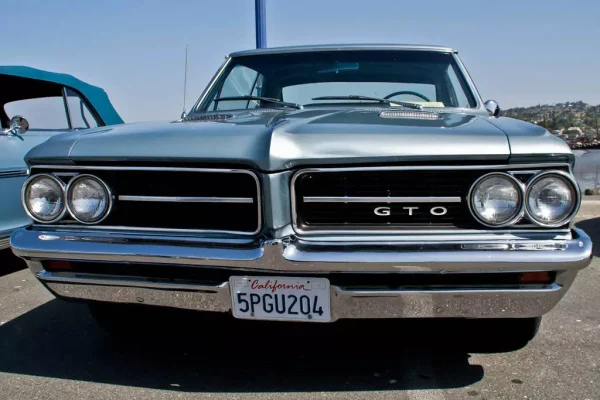
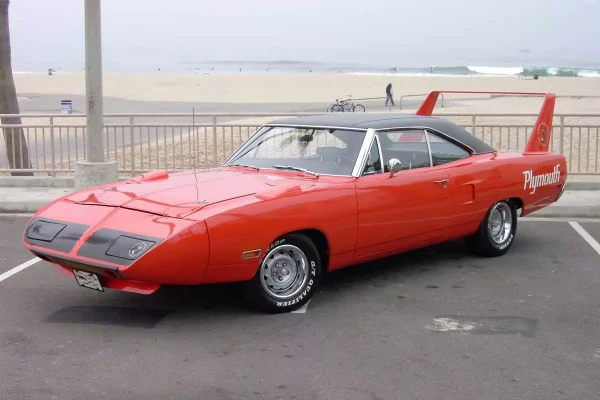
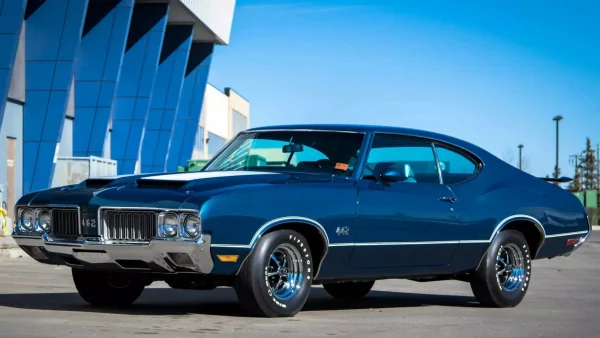


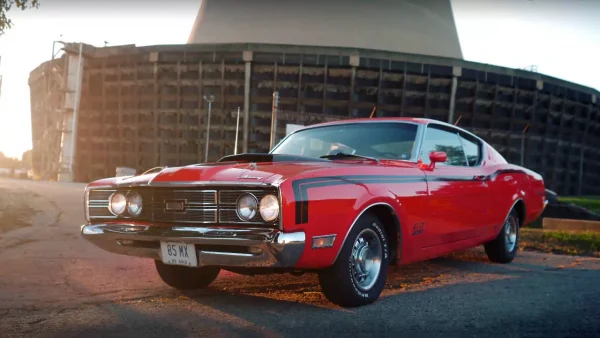
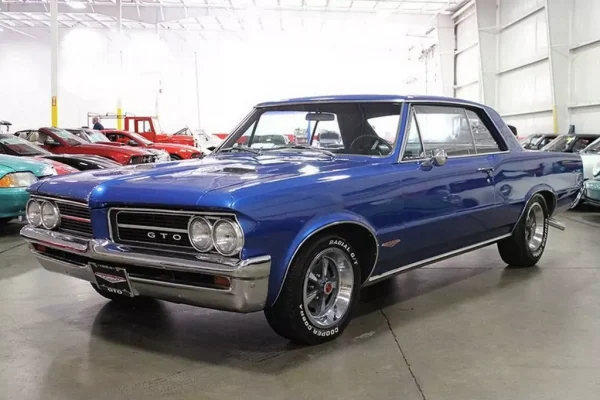

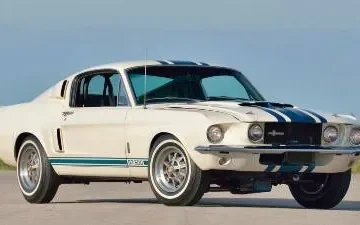


0 Comments